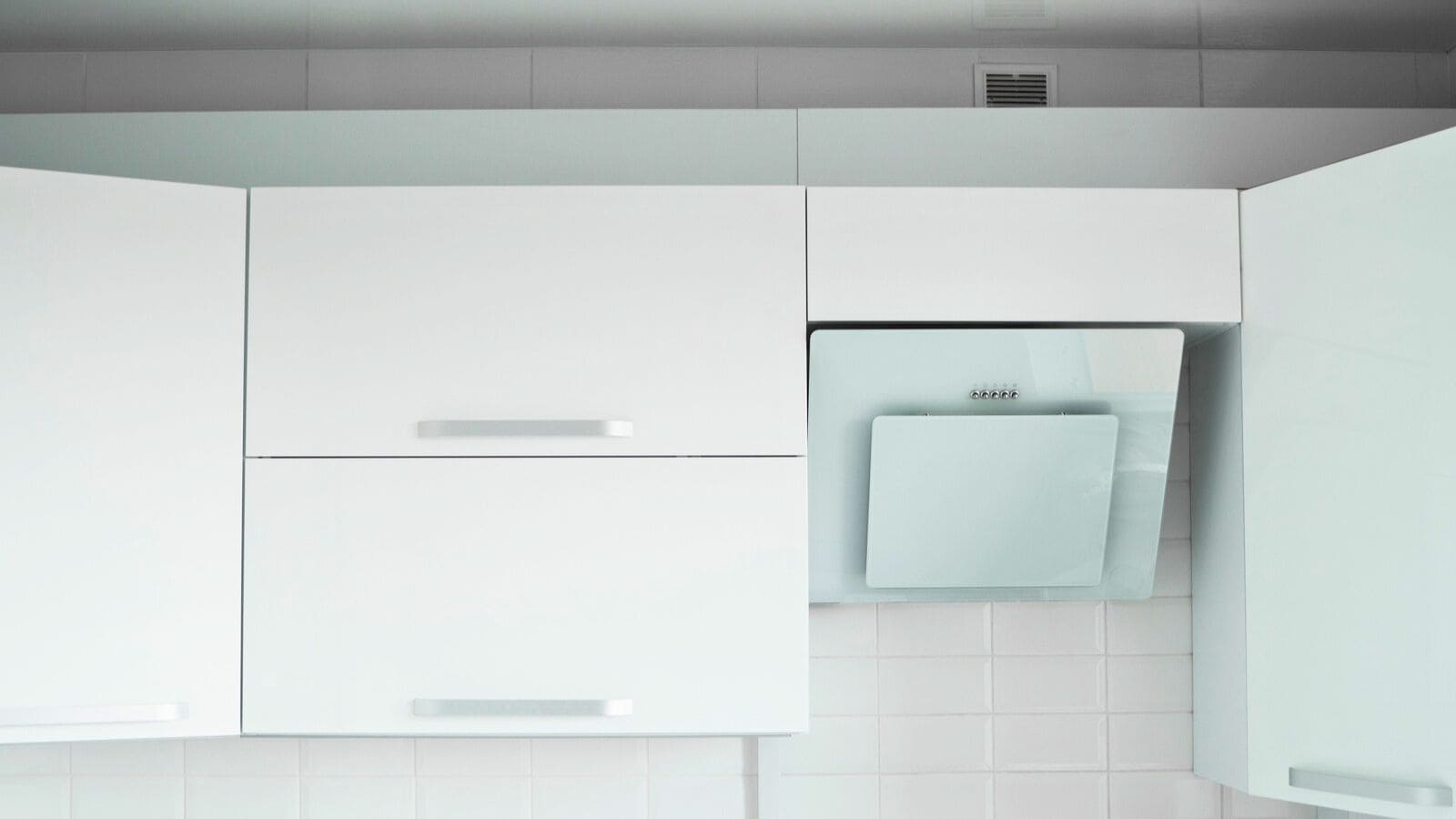Building a green kitchen isn’t just about going with the latest trends; it’s about making smart, sustainable choices that benefit both the planet and your household. The best part? You don’t need to overhaul everything at once—small changes can make a big impact.
From selecting energy-efficient appliances to incorporating eco-friendly materials, each step brings you closer to a more environmentally responsible kitchen. The choices you make in your kitchen can reduce waste, conserve energy, and improve air quality.
By focusing on sustainability, you create a space that’s not only better for the environment but also healthier for your family. Take it from us: building a green kitchen is an endeavor worth taking. Ready to take that step? Let’s discuss some tips to help you get started!

Choose Energy-Efficient Appliances

Selecting energy-efficient appliances is a great move toward a more eco-conscious kitchen. Look for ENERGY STAR-rated options, as they use less energy and help lower your electricity bills. These appliances are designed to operate with minimal environmental impact, reducing greenhouse gas emissions. By using less energy, they also put less strain on natural resources. Whether it’s a refrigerator, dishwasher, or oven, investing in energy-efficient models is a solid step in creating a greener kitchen, contributing to a more sustainable lifestyle.
Use Eco-Friendly Materials

When building or remodeling your kitchen, consider using eco-friendly materials that have a lower environmental impact. Materials like bamboo, recycled glass, and reclaimed wood are excellent choices. Bamboo grows rapidly, making it a sustainable option, while recycled glass and reclaimed wood reduce waste by reusing existing resources. These materials not only help reduce your carbon footprint but also contribute to healthier indoor air quality by avoiding toxic chemicals. Embracing eco-friendly materials supports sustainability and adds a distinct, natural charm to your kitchen.
Install LED Lighting

LED lighting is an effective way to reduce energy consumption in your kitchen. LEDs use significantly less energy than traditional incandescent or fluorescent bulbs and have a much longer lifespan. This means fewer replacements, less waste, and lower electricity bills. LED lights also emit less heat, which can help keep your kitchen cooler. They are available in various styles and colors, allowing you to customize your kitchen’s lighting while staying energy-conscious. Installing LED lighting is a straightforward step towards making your kitchen more environmentally friendly.
Invest in Water-Saving Fixtures

Water-saving fixtures like low-flow faucets and aerators are essential for a green kitchen. These fixtures reduce water usage without sacrificing performance, helping to conserve one of our most valuable resources. By installing water-efficient faucets and dishwashers, you can significantly cut down on your water consumption, which in turn reduces your water bill and lessens the strain on local water supplies. Water-saving fixtures are not only practical but also a responsible choice for anyone looking to create a more sustainable kitchen environment.
Go for Induction Cooking

Induction cooking is a smart choice for those looking to reduce energy consumption in the kitchen. Induction stoves use electromagnetic energy to directly heat pots and pans, which is more efficient than traditional gas or electric stoves. This direct heating method minimizes energy loss and allows for precise temperature control, making cooking faster and more efficient. Additionally, induction cooktops remain cool to the touch, enhancing kitchen safety. Switching to induction cooking is a forward-thinking step toward a greener, more efficient kitchen.
Incorporate Recycling and Composting

Setting up a system for recycling and composting is essential for reducing kitchen waste. Designate separate bins for recyclables like paper, glass, and plastic to make sure these materials are properly processed instead of ending up in a landfill. Composting food scraps like vegetable peels, coffee grounds, and eggshells turns organic waste into nutrient-rich compost, perfect for gardening. By incorporating recycling and composting into your daily routine, you significantly reduce the waste generated in your kitchen, promoting a more sustainable living environment.
Opt for Non-Toxic Paints

When painting your kitchen, opting for non-toxic, low or zero-VOC (Volatile Organic Compounds) paints is crucial for maintaining good indoor air quality. Traditional paints can release harmful chemicals into the air, contributing to indoor pollution and potential health risks. Non-toxic paints are formulated to be safer for both your family and the environment, reducing the emission of hazardous fumes. These paints are available in various colors and finishes, allowing you to personalize your kitchen while keeping it healthy and eco-friendly. Choosing non-toxic paints is a proactive way to create a safer, greener kitchen space.
Install a Ventilation System

A well-functioning ventilation system is vital for maintaining air quality in your kitchen. Proper ventilation helps remove cooking fumes, excess moisture, and airborne particles, reducing the risk of mold and keeping your kitchen fresh. A range hood or exhaust fan can effectively filter out smoke, odors, and grease, preventing them from spreading throughout your home. By installing a reliable ventilation system, you guarantee that your kitchen remains a healthy environment, free from harmful pollutants, while also contributing to energy efficiency in your home.
Use Reusable Items

Embracing reusable items in your kitchen is a simple yet impactful way to reduce waste. Replace single-use items like plastic bags, paper towels, and disposable utensils with durable, reusable alternatives. For example, use cloth napkins instead of paper ones, glass containers instead of plastic, and stainless steel or bamboo cutlery in place of disposables. By opting for reusable items, you not only cut down on waste but also save money in the long run. This approach supports a more sustainable lifestyle and reduces the environmental impact of your kitchen.
Select Green Cleaning Products

Choosing green cleaning products for your kitchen is an important step in minimizing your environmental impact. Conventional cleaning products often contain harsh chemicals that can pollute indoor air and harm aquatic life when washed down the drain. Green cleaning products are made from natural, biodegradable ingredients that are safer for both your family and the environment. They effectively clean surfaces, remove stains, and eliminate odors without leaving behind toxic residues. By selecting green cleaning products, you contribute to a healthier kitchen environment and reduce your ecological footprint.
Utilize Natural Light

Maximizing the use of natural light in your kitchen not only saves energy but also creates a bright and welcoming atmosphere. Large windows, skylights, or glass doors can help flood your kitchen with sunlight, reducing the need for artificial lighting during the day. This not only lowers your electricity bills but also benefits your health by supplying natural vitamin D and improving your mood. Additionally, natural light can enhance the aesthetic of your kitchen, making it feel more open and airy. Incorporating natural light into your kitchen design is a practical and sustainable choice.
Compost Food Scraps

Composting food scraps is an effective way to reduce kitchen waste and create valuable compost for gardening. Instead of throwing away fruit and vegetable peels, coffee grounds, eggshells, and other organic waste, set up a compost bin in your kitchen or backyard. Over time, these scraps decompose into nutrient-rich compost that can be used to enrich soil and support plant growth. Composting not only reduces the amount of waste that ends up in landfills but also helps you close the loop on food waste by returning nutrients to the earth.
Install a Rainwater Harvesting System

Installing a rainwater harvesting system is a smart way to make your kitchen more sustainable. By collecting rainwater from your roof, you can use it for non-potable kitchen tasks such as watering plants, cleaning floors, or even flushing toilets. Rainwater harvesting reduces your reliance on municipal water supplies and can lower your water bills. The system typically includes gutters, downspouts, and storage tanks to capture and store rainwater. By using rainwater for everyday tasks, you conserve fresh water and reduce your environmental impact, making your home more eco-friendly.
Your Kitchen, But Greener!

Creating a green kitchen is more than just a trend; it’s a commitment to living responsibly and making choices that matter. By focusing on sustainability, you’re not only reducing your environmental impact but also investing in a healthier space for you and your family.
As you implement these tips, remember that building a green kitchen is a journey, not a race. It’s about finding the balance between functionality and sustainability, making your kitchen a place where great design and responsible living come together.
So, whether you’re just starting or well on your way, keep pushing forward. Your green kitchen isn’t just good for the planet; it’s a space that works perfectly for you. Trust the process and enjoy the positive impact it brings to your home.






Tell Me What You Think!